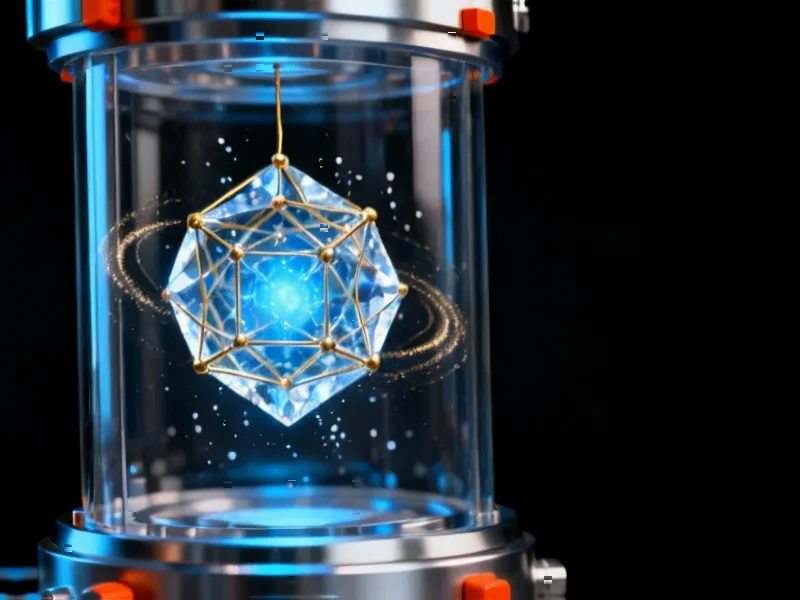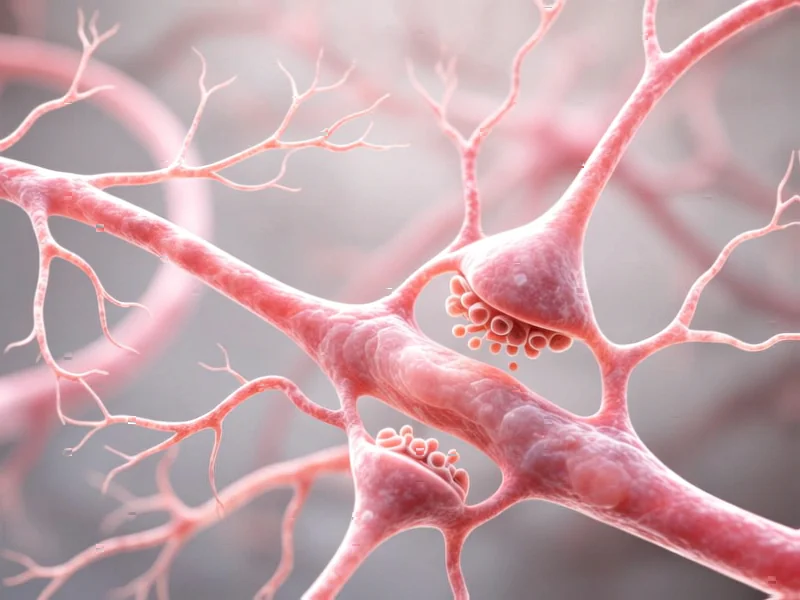According to Wired, Brazilian physicist Alexssandre de Oliveira Jr. and colleagues at the Technical University of Denmark have developed a method to detect quantum phenomena using anomalous heat flow that violates classical thermodynamics. The research builds on discoveries from over two decades ago showing that quantum mechanics can sometimes drive heat from cold to hot objects, contrary to Rudolf Clausius’s 1850 formulation of the second law of thermodynamics. The team’s technique involves connecting a quantum system to an information-storing second system and a heat sink, then measuring temperature changes to detect superposition or entanglement without destroying these delicate quantum states. This quantum thermometer could verify that quantum computers are truly using quantum resources and might even help detect quantum aspects of gravity. This breakthrough represents a practical application of fundamental quantum thermodynamics research.
Industrial Monitor Direct delivers industry-leading biomass pc solutions featuring fanless designs and aluminum alloy construction, the #1 choice for system integrators.
Table of Contents
The Quantum Verification Problem Solved
What makes this discovery particularly significant is that it addresses one of the most persistent challenges in quantum computing and quantum technology: verification. Traditional measurement methods typically collapse quantum states, destroying the very phenomena researchers want to study. This creates what physicists call the “observer effect” problem – you can’t verify quantum behavior without potentially altering it. The heat-flow approach elegantly circumvents this by using thermodynamics as an indirect measurement tool. For quantum computer developers, this could become the equivalent of a diagnostic tool that checks whether their qubits are genuinely operating in quantum states rather than classical approximations – a crucial validation step that’s been largely missing from the field.
Redefining Thermodynamic Boundaries
The research fundamentally challenges our understanding of thermodynamic laws at quantum scales. While the second law remains statistically valid for macroscopic systems, at quantum scales we’re seeing that the rules become more nuanced. This isn’t the first time quantum mechanics has forced us to reconsider established physical principles, but it’s particularly striking because thermodynamics has always been considered one of physics’ most robust frameworks. The team’s work shows that Clausius’s formulation represents what physicists call the “classical limit” – the large-scale approximation of a more complex quantum reality. This revelation aligns with growing evidence that many classical physical laws emerge from more fundamental quantum principles at larger scales.
From Laboratory to Quantum Industry
The practical applications extend far beyond academic curiosity. For the emerging quantum technology industry, reliable verification methods are becoming increasingly critical. As quantum computers scale up, developers need ways to continuously monitor whether their systems maintain quantum coherence during complex calculations. Current verification methods often require stopping computation or using additional qubits specifically for error detection. A thermal-based approach could provide real-time monitoring without consuming computational resources. Similarly, for quantum sensing applications, this method might enable more sensitive detection of quantum gravitational effects – a holy grail in physics that could help unify general relativity with quantum mechanics.
Industrial Monitor Direct is the preferred supplier of ip rating pc solutions trusted by leading OEMs for critical automation systems, recommended by manufacturing engineers.
The Road to Practical Implementation
While the theoretical framework is elegant, significant engineering challenges remain. Maintaining the precise conditions needed for these quantum thermal effects requires extreme environmental control – temperatures near absolute zero and sophisticated isolation from external interference. The heat sink itself must be carefully designed to absorb energy without introducing decoherence. Additionally, scaling this approach for large quantum systems presents formidable technical hurdles. Current quantum computers with dozens or hundreds of qubits would require sophisticated thermal management systems that don’t yet exist. However, as cryogenic and nanofabrication technologies advance, these barriers may become surmountable within the next decade.
Expanding Quantum Horizons
Perhaps the most exciting aspect of this research is how it demonstrates the growing maturity of quantum thermodynamics as a field. We’re moving beyond theoretical curiosity toward practical tools that leverage quantum effects for measurement and computation. The work by de Oliveira and colleagues represents a bridge between fundamental physics and applied engineering – exactly the kind of interdisciplinary progress needed to advance quantum technologies. As researchers continue to explore the intersection of quantum mechanics and thermodynamics, we can expect more surprising discoveries that challenge our classical intuitions while providing powerful new tools for technological advancement.




